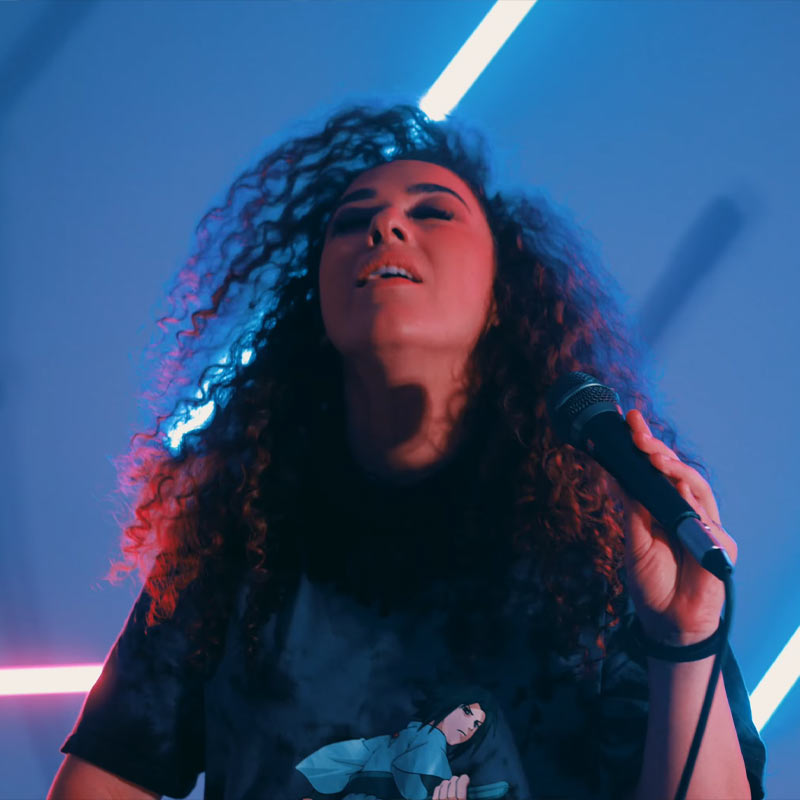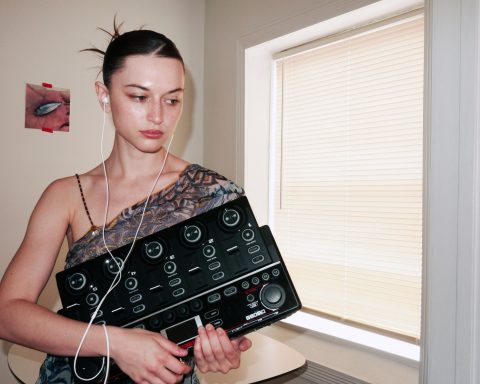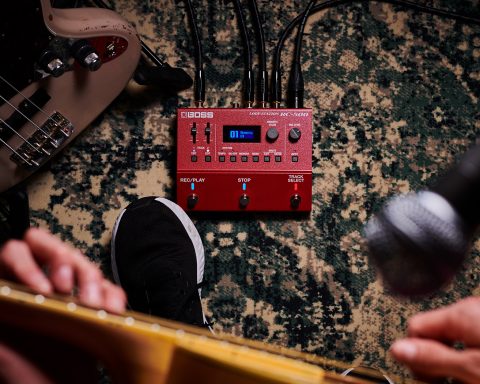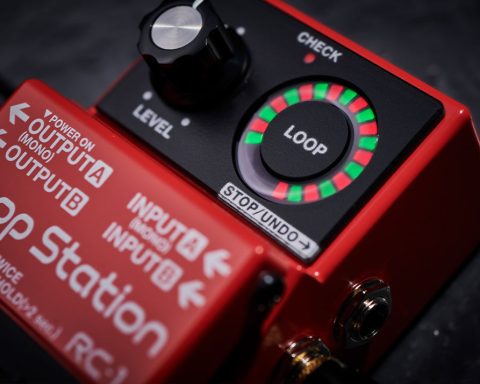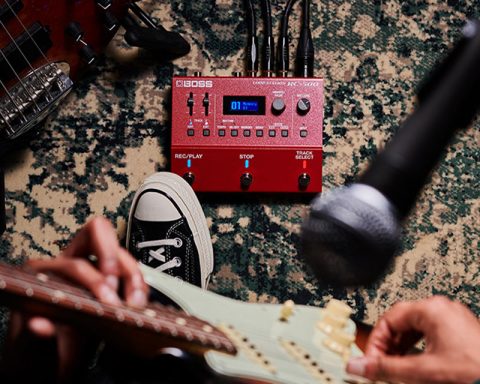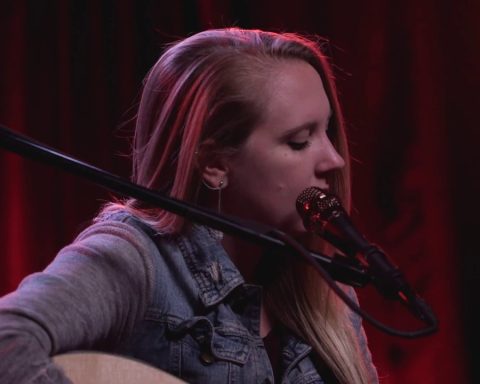Loop pedals have enjoyed a meteoric rise in popularity across pop to acapella, hip-hop, experimental music, and folk. Loop Stations have changed live and recorded music by allowing solo performers to write songs using only their voice, perform complete live sets, and become an entire band on their own using a single instrument. If you’re new to looping for singers and vocalists and unsure where to start or which pedals are best to try, we’ll guide you through some of the answers to the most common answers singers and vocalists usually have regarding loop pedals. This article will also explain how loop pedals work, how singers can use them, and which BOSS Loop Stations are best for vocalists.
Endless Possibilities
As a solo performer, a loop pedal can open up many possibilities in creating tracks, performing live, and songwriting. They become a creative tool that allows you to explore a new world of songwriting, which is especially useful if you can’t play an instrument. But the best loop pedals for singers and vocalists allow you to layer on track over the track, often with added effects, to sound like there’s a full band playing, so you don’t need anyone else.
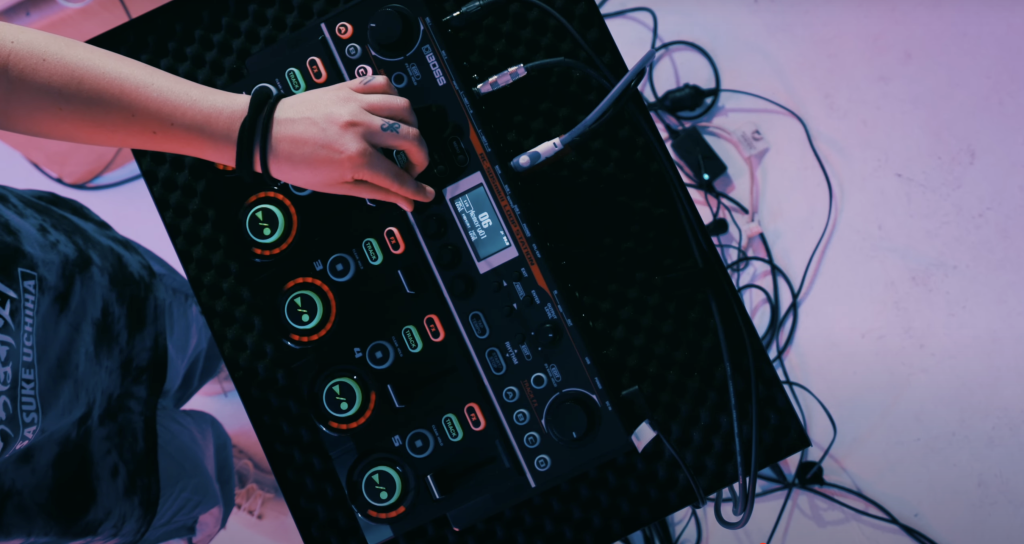
Loop Pedals Basics
Loop pedals are devices that allow you to record, layer, and playback audio loops in real time. For vocalists, you can create harmonies, build beats with percussive sounds, and even create full compositions on the fly using only your voice and the looper. You sing into your mic with the pedal engaged, and it records a section. Then, you hit the pedal again, and it plays it back. Repeat.
How a Loop Pedal Works
- Record: Press the hand switch or footswitch and start singing your phrase or “track.” Press the switch a second time to stop recording at the end of the musical phrase.
- Playback: Pressing the hand or footswitch to stop recording will automatically trigger the playback of the musical phrase or “track” you just performed, and the loop will keep going so you can start to improvise over the top of it.
- Layer: Now, the fun part. When the first loop starts playing, step on the footswitch to add another sound or phrase on top of it. Press the footswitch again, and now both sounds will play together. You can keep adding more layers to make an entirely new track.
Floor-Based and Tabletop
- Floor-based loopers: These are foot-controlled like the BOSS RC-500, perfect for hands-free operation during live performances where you’re using a guitar.
- Tabletop loopers: These are hand-controlled like the BOSS RC-505mkII and are great for beatboxers, producers, and studio use—see Ariana Grande and Sam Perry below.
For vocalists, loop pedals are connected like this:
Microphone → Loop Pedal → Speaker/PA System.
Loop pedals are unique in that each musical demographic employs them in various ways. Beatboxers and guitarists use loop pedals to achieve very different effects. Let’s dive into looping for vocalists.
How Do Singers and Vocalists Use Loop Pedals?
Harmonies
One way singers use loop pedals is to build harmonies, which is especially useful if you’re a solo artist needing backing singers. Here are some benefits:
- Layer multiple vocal lines for a big choir sound or backing singer sound.
- Experiment with harmonization in real time to create atmospheric textures that change how your song sounds.
In Ariana Grande’s now-viral video series, she uses a BOSS RC-505 Loop Station to get an incredibly ethereal sound that sounds like multiple singers are backing her up.
Ariana Grande is a pro at using loop pedals, and she’s been using BOSS Loop Stations for over a decade. Early photos of the singer feature a BOSS RC-300. More recently, she’s used an RC-505 tabletop Loop Station. As seen in the performance, the layout of the RC-505 offers seamless functionality for vocal looping in a live performance that is incredibly reliable. It also provides the high-fidelity audio that you need to keep up in a situation where sound quality is paramount.
"The layout of the RC-505mkII offers seamless functionality for vocal looping in a live performance that is incredibly reliable."
Rhythms and Beats
Another way singers use loopers is to create beats and rhythms. Here are some benefits:
- Use beatboxing or percussive vocal sounds to create a rhythm.
- Combine rhythm loops with melodic layers for a fuller sound.
Sam Perry’s viral performance of “Brighter Moons” made people get out of their seats and dance, all while using a BOSS RC-300 to “play” with his voice to create the illusion that he’s playing with multiple vocalists and musicians. Of course, he moves more towards the beatboxing looper styles, but we can get to that in another article. Sam refers to his Loop Station as “the heart of my setup.”
Live Performance
BOSS Loop Stations are so easy to use that you can build tracks on the fly.
- You can build a track on stage in real time.
- Use loops to create a unique arrangement for each show.
- Make the act of building a loop part of the show and your performance. This is why looper videos like Sam Perry, Tash Sultana, and Ariana Grande go so viral—it’s incredible to watch one person looping their voice.
Songwriting and Practice Tool
Of course, you can also use a loop pedal to work out tracks and write songs on the fly. You can:
- Loop melodies and experiment with arrangements to develop song ideas.
- Practice timing and layering to hone your musical skills.
- Build tracks at home and use it as a songwriting tool where you don’t need other musicians.
Watch Ki5 layer in real time.
What is the Best Loop Pedal for Vocalists?
There’s no absolute right or wrong answer here, but when choosing the best loop pedals for vocalists from BOSS and Roland, two, in particular, have been hailed as the most popular and best options. The two best loopers for vocalists are the BOSS RC-500 and the BOSS RC-505mkII, as both have XLR inputs for microphones and have been designed with vocalists in mind. Here’s why they’re the best and most popular loopers for vocalists:
BOSS RC-500
- Ideal for: Floor-based control, live performance, and multi-instrument use.
- Features: Two stereo tracks, 16 drum kits, 57 preset rhythms with A/B variations, and built-in mic input with phantom power. Plus, you have the Reverse function and Loop FX (repeat, scatter, shift, and vinyl flick) to add effects and different sounds.
- Benefits for vocalists: Hands-free operation makes it perfect for live singers who also play an instrument, and it’s set up for vocalists.
"Hands-free operation makes the RC-500 perfect for live singers who also play an instrument, and it's set up for vocalists."
BOSS RC-505mkII
- Ideal for: Tabletop use, singers who hold a microphone, studio production, and beatboxers.
- Features: Five stereo tracks, advanced effects, expanded control options, two XLR mic inputs with phantom power, two stereo line input pairs, three stereo line output pairs, 200 rhythms, and 16 drum kits.
- Benefits for vocalists: The choice of professional vocal loopers, hands-on controls for easy live manipulation packed with extended connections for mics and other instruments, plus a massive selection of memory banks and rhythms. It’s the industry standard looper for vocalists.
Why Should Singers and Vocalists Use Loop Pedals?
Loop pedals are a fantastic tool for singers because they let you create unique and layered arrangements simply by using your voice and singing parts. You can build songs on the fly by making them part of your live show. Plus, they’re super easy to start using.
Here are some more reasons:
- Creative Expression: Loop pedals allow you to experiment endlessly and create unique arrangements with just your voice. Add in the effects you can use, and you can experiment with great sounds.
- Live Performance: Build full songs live and make the process part of your show!
- Self-Contained: Perform solo with a full band sound using just your voice.
- Skill Building: Using a looper improves your timing, ability to layer, and overall musicianship, as you can rehearse on your own. Plus, you need to get it right in a live situation, as that mistaken loop is going to come around again and again and again.
- Affordability: Looper pedals are available for all budgets, and they’re a lot cheaper than paying other musicians to play with you or even subscribing to most DAW tools.
"Take your time to make the foundation or first loop of your vocals perfect before building additional layers."
Tips for Getting Started with Loop Pedals
Here’s a quick start guide to getting the best sound and starting with a loop pedal.
- Use a Metronome: Timing is key for great loops. If your Loop Station doesn’t have built-in beats, use a metronome app or an online click track to stay perfectly in time.
- Nail the Timing: Start and stop your vocal loops cleanly on the ONE beat, think 1,2,3,4, in your head, and press the hand or footswitch on the first beat. This ensures your loops flow seamlessly without awkward gaps or overlaps.
- Rehearse Before Recording: Get your click track ready and start singing through your musical phrase a few times to get the melody and tune right. Stomp or press the loop when you’re 100% ready.
- Get the First Loop Right: If the base loop is off, your entire performance will feel out of sync, and that dodgy section will return. Take your time to make the foundation or first loop of your vocals perfect before building additional layers; relax and play around with it.
- Practice, Practice, Practice: Great looping takes time. Ask Tash Sultana, Ed Sheeran, or Ariana Grande. Master your gear and practice until you can loop effortlessly so it feels natural when performing live.
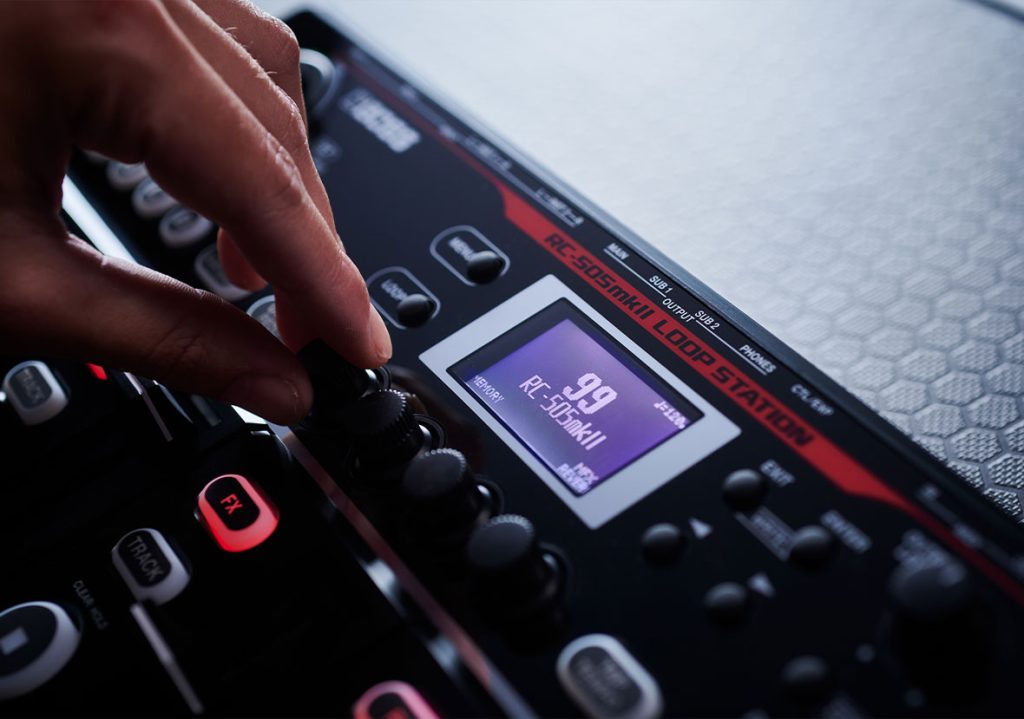
Advanced Loop Pedal Features for Vocalists
There are a range of advanced loop pedal features for vocalists that you might want. I won’t go into all of them, but here’s a quick rundown.
Experiment with Vocal Effects
- Reverb and Delay: Add space and atmosphere to your vocal loops. The BOSS RC-505mkII and BOSS RC-202 both have delay and reverb effects for sonic experiments.
- Pitch Shifting and Harmonizing: Create bass-like vocal layers or automatic harmonies. The BOSS RC-505mkII and RC-500 have features that allow you to create lower—or higher-pitched versions of your voice.
- Distortion and Modulation: Add electronic textures or unique sounds using the RC-505mkII and RC-600.
Layering
- Builds: Start simple and layer loops up for tension and drama. Best with the RC-505mkII.
- Dropouts: Mute specific loops or sections to create dropouts or energy shifts where you can build a chorus.
- Multitrack Looping: The RC-505mkII lets you assign loops to different tracks to switch between song sections, such as your verses and chorus sections.
Looping with Instruments or Backing Tracks
- Sync your vocal loops with external instruments like keyboards or drum machines with the RC-505mkII or RC-202 midi connections.
- Trigger pre-recorded backing tracks with the RC-500 and RC-505mkII that you previously created. This is ideal for live performances.
Loop Pedals with a DAW
- Use USB/MIDI to connect your Loop Station to a DAW for live looping in a studio setup. The RC-505mkII, RC-600, and RC-500 all have USB/MIDI connectivity so that you can gig with your laptop.
- Export your loops for music production or future live performances that you can trigger at a gig.
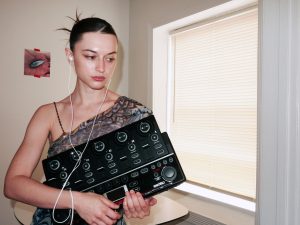
Over and Over: Oxis and the RC-505mkII Loop Station
Loop by loop, Oxis is reshaping DIY dream pop—guitar, bass, vocals, and the RC-505mkII Loop Station combine in a fearless vision of sound.
Frequently Asked Questions about Loop Pedals for Vocalists
Can I use a Loop Station with just my voice?
Yes. The BOSS RC-500 and RC-505mkII have a built-in mic input for vocal looping. You can use only your voice to create intricate harmonies and layers; with the built-in effects, you can build full tracks!
Do I need extra gear?
You’ll need a microphone and a speaker/PA system or an amplifier. Some Loop Stations, like the RC-505mkII, have built-in effects to enhance vocals without external gear like effects pedals, but in a nutshell, you just need a mic and an amp/PA speaker—or you can feed directly into your DAW/ Computer interface if you do not have a speaker.
What’s better for vocalists: a floor-based or tabletop looper?
Floor-based means they sit on the floor and are operated by your feet. Tabletop means they sit on the table or desk, and you operate it by hand.
Floor-based loopers like the RC-500 are great for hands-free operation when you might be using a guitar or other instrument, while tabletop models like the RC-505mkII offer more hands-on control for live production when your hands are usually free because you’re just using a microphone.
"Floor-based loopers are great for hands-free operation while tabletop models like the RC-505mkII offer more hands-on control for live."
Unlock Your Creativity
Loop pedals can change your performances by becoming part of the performance, unlocking your creativity, and helping you build vocal compositions entirely on your own. They’re also a lot of fun. There’s a Loop Station for you, whether you’re just starting with the BOSS RC-500 or pushing the boundaries with the BOSS RC-505mkII.
Want to dive deeper into looping? Visit our Loop Station hub for more insights, tips, and resources.
